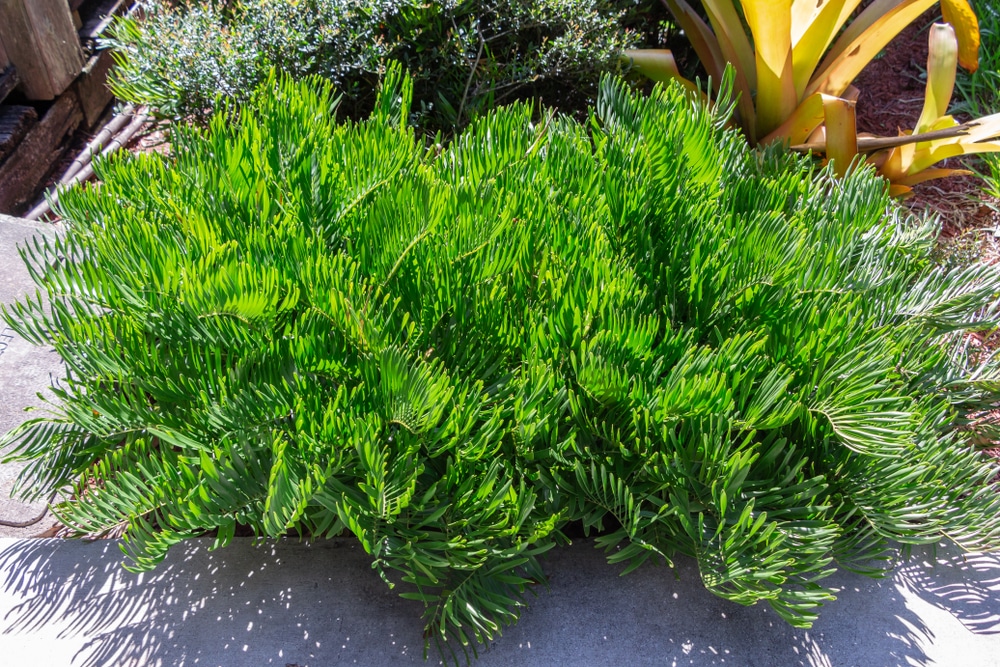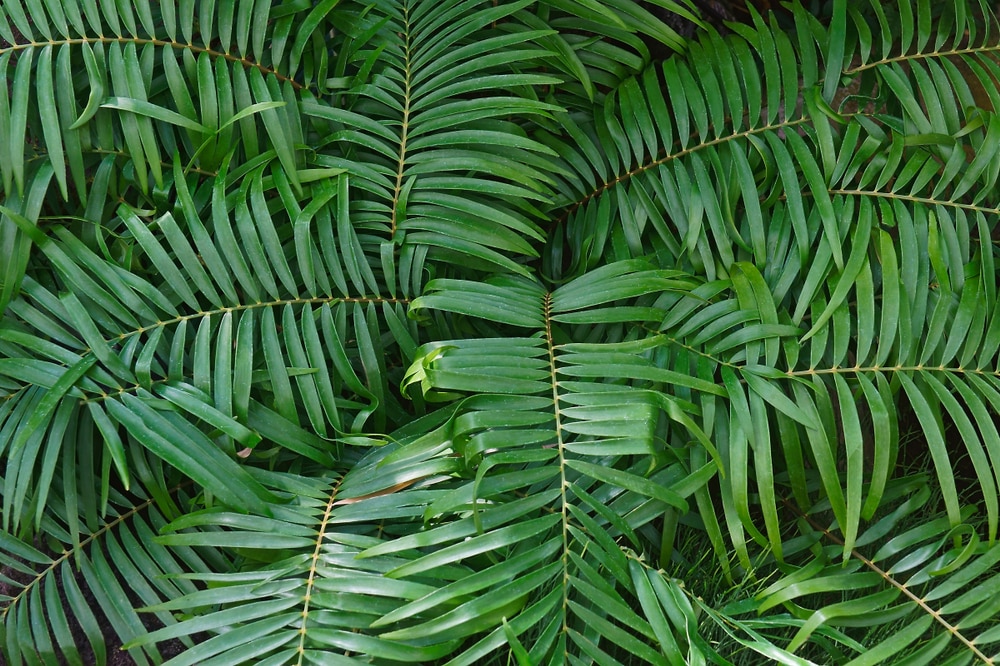Contrary to its name, Coontie Palm is actually not a palm but a cycad. It is a slow-growing plant that is native to Florida and can only reach up to 4 feet in height. This plant is a small but tough shrub that can withstand neglect and harsh conditions. It is tolerant of drought and salt spray and can even grow in poor, sandy soil.
It is also resistant to most pests and diseases. Coontie palm is an easy plant to care for and does not require much maintenance. So, if you are looking for a resilient, low-maintenance plant to add to your landscape, the Coontie palm is definitely a great choice.

| Botanical Name | Zamia pumila |
| Common Name | Coontie Palm, Cardboard Palm, Sago Palm |
| Plant Type | Perennial |
| Flower Color | Does not produce flowers |
| Size When Mature | 36-48 Inches |
| Bloom Time | Does produce fruits or flowers |
| Sun Requirements | Full Sun to Full Shade |
| USDA Hardiness Zones | 8-11 |
| Soil PH Range | 5.6 to 7.3 |
| Soil Type | Sandy loam, well-draining |
| Water Needs | Low |
| Native Area | Central and Southern Florida |
Coontie Palm
Being a cycad, the Coontie Palm is a gymnosperm which means that it produces cones instead of flowers and fruits. It is dioecious, meaning that there are male and female plants. The male cone of the Coontie palm is short and slender while the female cone is oval-shaped and covered in velvety fur.
This plant is an evergreen that light green, glossy leaves that are feather-like in appearance with leaflets that are arranged in with a toothed margin. One downside to this plant is that it is dangerous both to humans and animals.
While the entire plant is poisonous, the seeds in the cones are highly toxic and can cause serious health problems if ingested. Just 2 seeds can make your pet sick and 4 seeds can already be deadly. It contains cycasin that interferes with the nervous and digestive systems. Therefore, it is important to keep this plant out of reach of children and pets.
Because it grows very slowly, it can take several years to reach its full size. It is an undemanding plant that requires very little upkeep. Once it is established, it basically survives on its own. For these reasons, it is a great choice for those who do not want to spend a lot of time caring for their plants.
How to Care for Coontie Palm
Here’s everything you need to know about growing and caring for a thriving Coontie Palm
Light
This little plant does well in full sun to full shade. They are the happiest when they get around 4 to 6 hours of sunlight per day as this palm needs 80-100% sunlight.
Water and Soil Needs
Coontie palms are quite drought-tolerant once established but will appreciate a little extra water during extended periods of dry weather. They should be watered deeply but allowed to dry out somewhat between waterings. Overwatering is more harmful to this plant than underwatering so be careful not to go overboard.
It enjoys sandy loam and well-draining soil. It is very flexible and can grow in almost any kind of soil. Surprisingly, it can actually thrive in soil with any pH level but 5.6 to 7.3 is ideal. It can flourish in moist soil and can tolerate dry soil at the same time.
Temperature Requirements
This cycad can be very tough and hardy. It can tolerate both full sun and cold weather. It can survive extreme temperatures but does well in USDA zones 8 to 11.
Fertilizer
The best fertilizer to use on a Coontie Palm is a granular and organic fertilizer. This plant does not actually require a lot of fertilizer but you can give it a boost every spring and fall. You may also use a water-soluble fertilizer. Be sure to follow the manufacturer’s directions carefully to avoid over-fertilizing.
Common Diseases
As tough as it may be, this plant may still be affected by a few pests and diseases. It may be infested by scale which can cause damage to the plant by sucking out its sap. This needs to be treated immediately otherwise, it can kill the plant. To get rid of scale, you can use an insecticide or you can also remove them manually.
Sooty mold and mealy bugs can also attack this plant. Sooty mold is a fungus that appears as a black, sooty substance on the leaves of the plant. Mealybugs are tiny white pests that feed on the sap of plants. They can both be treated with insecticidal soap or horticultural oil.
Coontie Palm Propagation
This plant is mainly propagated by seeds. The perfect time to collect the seeds is when they get ripe. To remove the sticky covering, clean them and spread them on the ground.
Cover them with a thin layer of soil or leaves and they will germinate in about six weeks. Just remember to be extra careful as these seeds are highly toxic.
Related Article: Indoor Palm Trees

